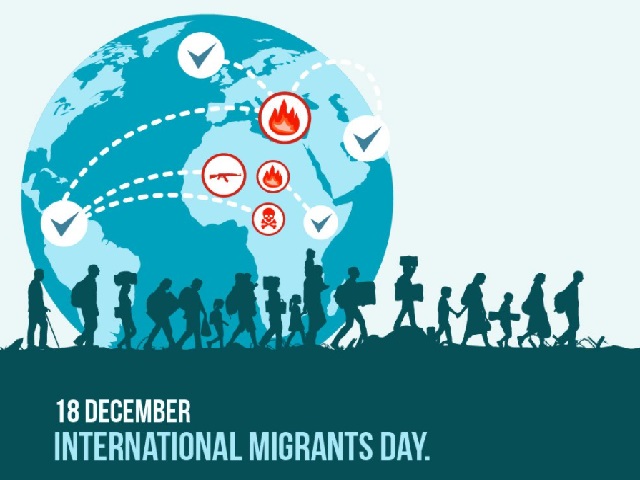5 Migrant Stories to Rethink the World on World Migrant Day

Every year on December 18th, the world unites to celebrate World Migrant Day. It’s a day to acknowledge the contributions of over 270 million migrants who enrich our communities and economies with their diverse perspectives and experiences. But beyond the statistics, lie powerful stories of resilience, hope, and the sheer human spirit thriving in unfamiliar soil. So, this World Migrant Day, let’s step beyond the headlines and delve into the lives that make migration more than just a statistic.
 Every year on December 18th, the world unites to celebrate World Migrant Day.
Every year on December 18th, the world unites to celebrate World Migrant Day.1. The Syrian Chef Who Seasoned a New Home:
Picture this: escaping war-torn Syria with nothing but a few spices and a family recipe for the most delectable hummus. That’s the story of Omar, who landed in a small Austrian town with a heavy heart and an even heavier mortar and pestle. Undeterred, Omar transformed his tiny apartment into a haven of aromatic delights, his hummus drawing in locals and fellow refugees alike. Today, Omar’s restaurant is a bustling hub, a testament to the fact that sometimes, the most potent flavors come from the most challenging journeys.
2. The Venezuelan Doctor Who Healed a Divided City:
Imagine leaving behind a thriving medical practice to start anew in a country grappling with its own healthcare crisis. That’s the reality Dr. Maria faced when she arrived in Colombia, fleeing Venezuela’s economic turmoil. But Maria refused to be defined by displacement. She volunteered in underprivileged neighborhoods, her gentle touch and unwavering dedication bridging the gap between Venezuelan migrants and wary locals. Maria’s story is a reminder that even the most skilled hands can heal not just bodies, but also hearts and communities.
3. The Afghan Tailor Who Stitched Together a Future:
In a world obsessed with fast fashion, Rahim, an Afghan tailor in Delhi, is a living testament to the power of slow, meticulous craftsmanship. Fleeing the Taliban regime, Rahim arrived in India with nothing but his needle and thread, and a dream of reviving his family’s legacy of exquisite embroidery. He meticulously stitched together intricate tapestries and vibrant salwar kameez, each garment a story woven with the threads of his displacement and determination. Rahim’s tale is a celebration of the enduring spirit of human creativity, reminding us that even in exile, beauty can bloom.

4. The Congolese Ballerina Who Pirouetted into Acceptance:
Can you imagine trading the lush greenery of the Congo for the concrete jungle of New York City. And then swapping your bare feet for ballet shoes? That’s the extraordinary journey of Assunta, a young Congolese refugee who found solace and purpose in the world of ballet. Despite facing prejudice and cultural barriers, Assunta’s unwavering passion and breathtaking pirouettes won over hearts and minds. Proving that art transcends borders and speaks a universal language of grace and determination.
5. The Pakistani Coder Who Wrote His Way Home:
In an age of digital nomads, Asif’s story is a unique twist. A Pakistani software engineer working in Silicon Valley, he yearned to return home and contribute to his country’s tech scene. So, Asif did what any tech-savvy coder would do: he built a bridge. He co-founded a tech incubator in Pakistan, nurturing young talent and fostering a vibrant startup ecosystem. Asif’s story is a testament to the power of technology to bridge geographic divides. And empower communities, proving that sometimes, the greatest journeys are not outward, but inward, towards the hearts and minds of those we leave behind.

These are just five stories, mere glimpses into the kaleidoscope of human experiences that make up the tapestry of migration. This World Migrant Day, let’s move beyond the headlines and celebrate the resilience, the talent. And the sheer human spirit that migrants bring to our world. Let’s remember that behind every statistic, there’s a story waiting to be heard. A story that can remind us of our shared humanity and inspire us to build a world where borders are not barriers, but bridges to understanding and acceptance.

- Art
- Causes
- Best Offers
- Crafts
- Dance
- Drinks
- Film
- Fitness
- Food
- Игры
- Festival
- Gardening
- Health
- Главная
- Literature
- Music
- Networking
- Другое
- Party
- Religion
- Shopping
- Sports
- Theater
- Wellness



